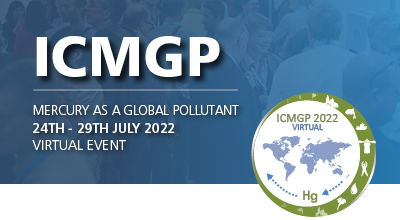| Abstract Title: | Mercury Emissions from the 2021 Fagradalsfjall Eruption, Iceland: Implications for the Global Volcanic Hg Flux |
| Presenter Name: | Brock Edwards |
| Company/Institution: | University of Manitoba |
| Session: | Atmospheric Hg cycling: Source and Emissions |
| Day and Session: | Wednesday 27th July - Session Three |
| Start Time: | 14:00 UTC |
| Co-Authors: | Brock Edwards |
Abstract Information :
Mercury (Hg) emissions to the atmosphere is an important part of the global Hg budget and a topic of environmental concern due to this element?s capability for global atmospheric transport and deposition. While Hg is emitted from a number of anthropogenic sources, natural emissions can be significant within the global Hg budget. This is particularly the case for Earth?s volcanic and geothermal systems, which emit Hg predominantly as the gaseous elemental mercury (GEM). Despite over 50 years of research, volcanic contributions to the global Hg cycle remain poorly constrained, with GEM flux estimates spanning three orders of magnitude (0.6 to 830 tonnes/year). This uncertainty is partly due to the various methods and approaches used and the large number of volcanic systems that remain unstudied for Hg emissions.
Iceland features volcanic eruptions roughly twice a decade with a wide array of eruption styles and magma compositions. The most recent eruption in Fagradalsfjall in 2021 provided an opportunity to measure Hg emissions using modern analytical techniques, from a volcanic region with virtually no Hg emissions data since the 1970s. We quantified plume GEM concentrations with different temporal resolutions using a Lumex analyzer (seconds), active samplers (hours), and passive air samplers (weeks). Based on coincident SO2 measurements, GEM emissions from the Fagradalsfjall eruption are estimated at 1.1?2.4 kg/day or 0.4?0.9 tonnes/year, in agreement with data from other basaltic hotspot volcanoes in Hawaii and Antarctica (0.2?0.3 tonnes/year). This agreement across the (relatively few) hotspot GEM fluxes supports the hypothesis that volcanic Hg is mainly sourced from crustal contributions rather than directly from the mantle. As such, arc volcanoes are the dominant global source of volcanic Hg to the atmosphere and should be targeted for future Hg emissions measurements in other understudied regions, particularly in Melanesia and Indonesia.



